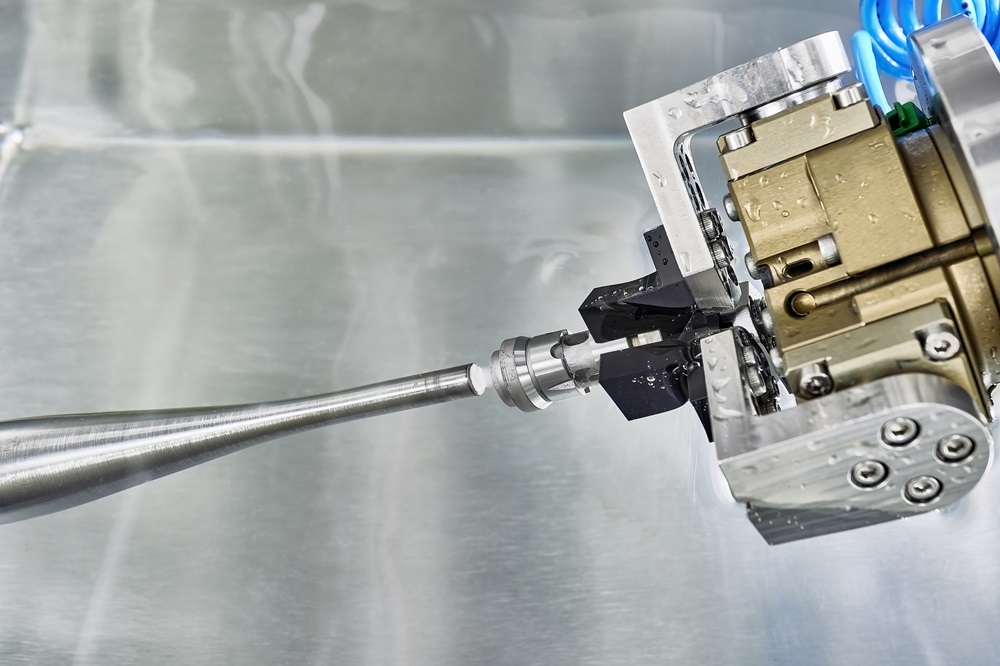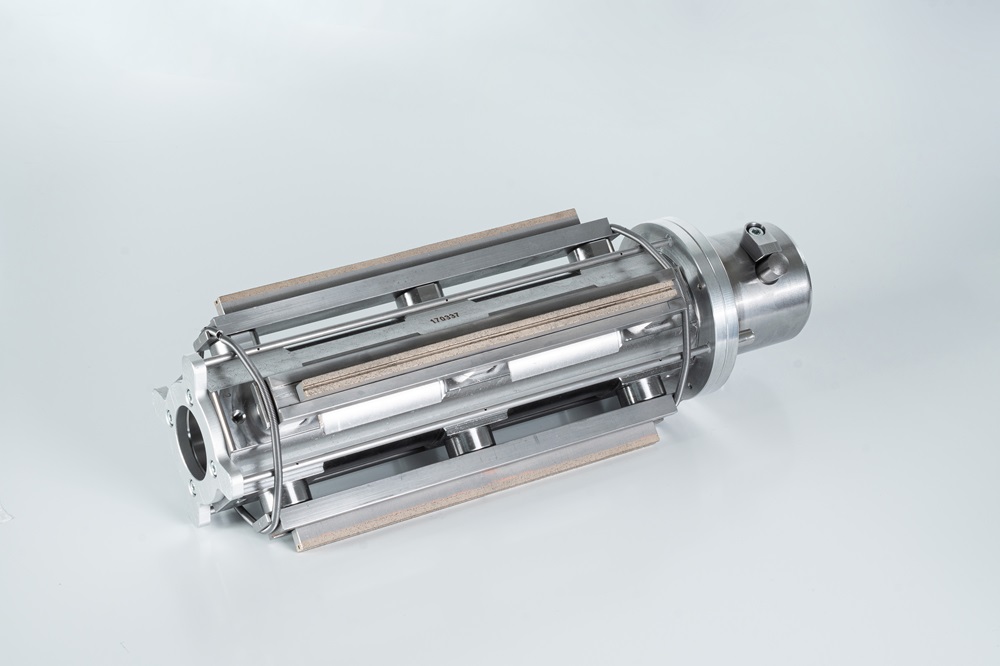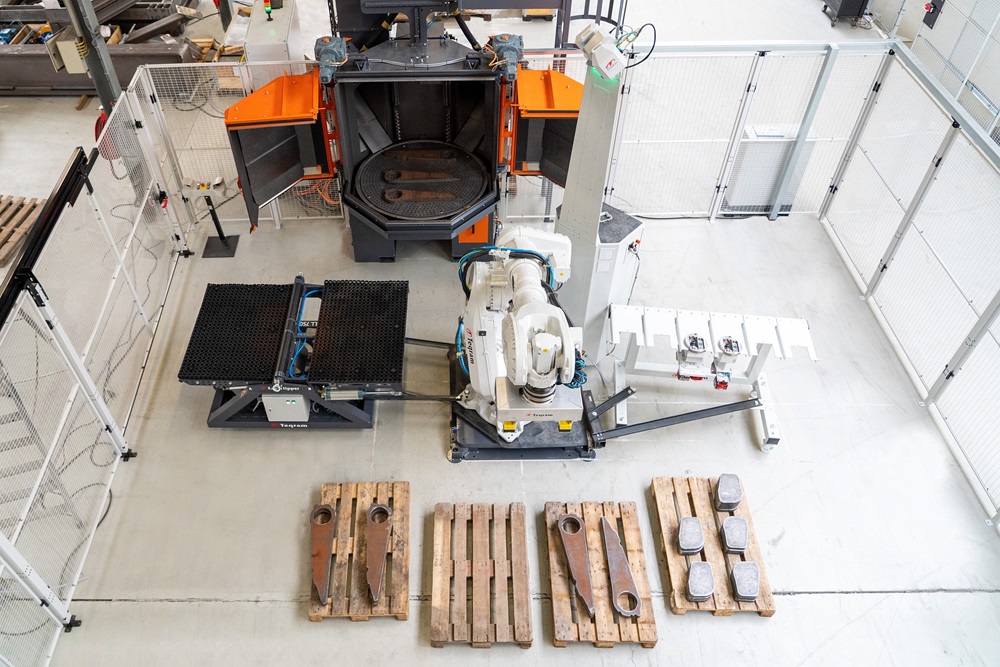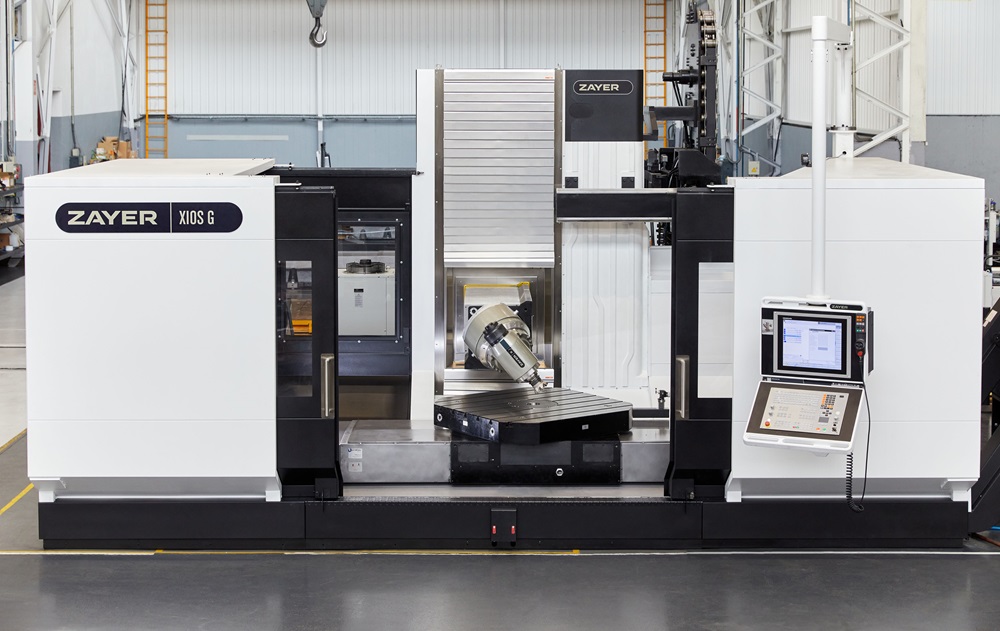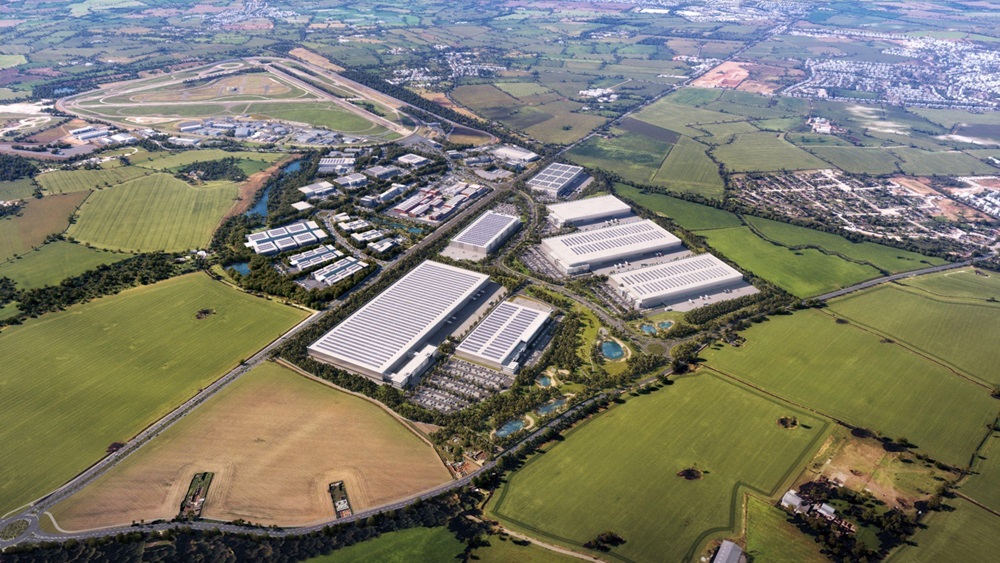MACH 2024 is the UK’s national event for inspiring innovation and connecting the country’s manufacturing community. Taking place at the NEC in Birmingham on 15-19 April, this five-day event will feature the UK’s largest display of working machinery in a single venue.
Mills CNC (www.millscnc.co.uk), for example, says it is set to stun visitors with the size, power, speed and versatility of its large Zayer six-axis multi-tasking machining centre. One of the biggest machines Mills CNC has ever showcased at MACH, the Zayer XIOS G MT with integrated turning capabilities has X-, Y- and Z-axis travels of 4 x 1.6 x 2 m, and a sizeable 2 x 2 m worktable that can accommodate loads up to 12,000 kg. Flexible machining arrives courtesy of a 1.5 x 1.5 m built-in rotary table, a 40 kW/6000 rpm spindle, a five-axis/45° milling head and a generous -sized tool changer (up to 80 tools).
Heller (www.heller.biz) is set to promote another high-capability machine at MACH. Although not at the show, the company will prominently feature its new F 6000 five-axis mill-turn centre. The machine was launched by Heller at the EMO trade show last September. Highlights include new swivelling heads with integrated motor spindles developed in-house and an optional direct-drive torque table for performing in-cycle turning operations. A pallet changer features as standard for first-level automation, enabling the subsequent easy integration of a rotary or linear pallet storage and retrieval system.
Yamazaki Mazak (www.mazakeu.co.uk) will shine the spotlight on several new machines as part of a nine-machine line-up. Among the highlights will be the HCN-4000 NEO horizontal machining centre, which is making its UK debut. Mazak will also show its VariAxis i-800 NEO, a next-generation five-axis machining centre for fully automatic operation over extended periods. Notably, the company will also give a UK premiere to its FSW-460V, aimed at those requiring machining and friction stir welding (FSW) capability within the same working envelope. Manufacturers in the electric vehicle, semiconductor and heat transfer sectors are set to benefit.
Over on the stand of Hurco (www.hurco.co.uk), the accent will be on five-axis machining as well as the automation of vertical machining centres (VMCs). For instance, there will be a Hurco ProCobot Profeeder assisting the production of parts on a VM20i three-axis VMC and an Erowa Robot Compact 80 feeding a trunnion-type five-axis model, the VMX30Ui. The ProCobot picks and places components and removes them after machining, with the app running directly in the Max 5 control and visible on the screen. Minimal information needs entering to set a job, so changeover time can be as rapid as 30 minutes, making plug-and-play, small-batch automation a reality. The Erowa cell, on the other hand, transfers the work holding as well as the part on a pallet.
Also at MACH will be NCMT (www.ncmt.co.uk), which is celebrating its 60th anniversary this year. In 1964, it was one of the first companies to sell CNC machine tools into the UK and Irish markets when it won the sole agency to sell and service Japanese-built Makino machining centres. Some 12 years later, a second agency agreement was reached with Okuma, another Japanese machine tool manufacturer, to sell its machining centres, lathes and grinders into the same markets. NCMT will showcase both Makino and Okuma machines on its stand at MACH. Notably, the show will mark the first UK appearance of the Makino DA300 five-axis, trunnion-type VMC configured as a production cell with 40 pallet positions on five levels.
On the stand of Citizen Machinery (www.citizenmachinery.co.uk), the focus will be on the company’s proprietary LFV operating system software, which ensures efficient chip breaking. Every Citizen sliding-head turn-mill centre on the stand will have this functionality, which the company says has had a transformative effect on sales of Cincom sliders around the world, as well as selected models within Citizen’s fixed-head Miyano turning centre range. According to the company, LFV offers superior chip breaking to that achievable with conventional pecking macros and dwells. This is especially the case when machining stainless steel, aluminium, copper, various exotic materials and plastics. There is also a noticeable improvement in tool life and surface finish due to less chip re-cutting.
Continuing this technology theme, Floyd Automatic Tooling (www.floydautomatic.co.uk) will use MACH to display its cutting tool and machining solutions for the sliding-head turning and small parts machining industry. For example, new products from Mikron Tool will include the CrazyMill Cool Micro series of micro end mills. Suitable for operations as diverse as side milling, helical interpolation, slot milling and drilling, the CrazyMill Cool Micro is available in three- or four-flute options with diameters from 0.2 to 1 mm.
Another tooling specialist, Rainford Precision (www.rainfordprecision.com) is set to showcase its diverse portfolio, which includes tools for specialist applications and material types. A case in point is Hufschmied Graftor range of end mills for machining graphite. According to Rainford, the range can double productivity rates and tool life in comparison with competitor tools.
Elsewhere at the show, Industrial Tooling Corporation (www.itc-ltd.co.uk) will highlight the merits of the Big Kaiser range. By way of example, for bore machining ITC will promote the Big Kaiser EWN Monoblock series. The EWN features Smart Damper technology that reduces chatter and subsequently cycle times. EWN Monoblock fine-boring heads now include the new CK1 and CK2 products that support the machining of diameters from 20 to 36 mm and 25 to 47 mm respectively.
Software solutions will also be conspicuous at MACH. CGTech (www.cgtech.co.uk), for example, will run live demonstrations of the features in version 9.4 of its Vericut machining simulation, verification and optimisation software, and provide an exclusive preview of what is to come in version 9.5. Vericut enables users to link all machining operations end-to-end, thus evaluating and improving the entire manufacturing process.
From a metal-forming software perspective, Lantek (www.lantek.com) is set to use MACH as a showcase for advancement in the company’s latest sheet metal CADCAM and ERP suites. For example, flexibility is one of the major improvements in Lantek Expert, making it easy to move nests of parts between different machines as production requirements change without the need for manual adjustments.
Retaining the sheet metal theme, Kerf Developments (www.kerfdevelopments.com) will give UK exhibition premieres to a selection of new product lines. The new Kerf Ultra, for instance, provides both oxy/fuel and plasma cutting in a single machine platform, subsequently expanding cutting capabilities, flexibility and processing speed for users while reducing set-up time and material changeovers.
If presswork is the name of the game, then Bruderer (www.bruderer.co.uk) is the place to go. The company plans to set-up a full production line as it looks to showcase the capabilities of its energy-efficient BSTL 350-88 stamping press in the volume production of small and miniature components.
What do nearly all parts need after manufacturing? Washing. If this activity is a priority then Ecoclean (www.ecoclean-group.net) will be well worth a visit. The company will show an advanced EcoCwave machine live on its stand to illustrate the various features and process options to ensure clean parts.
For further information www.machexhibition.com







